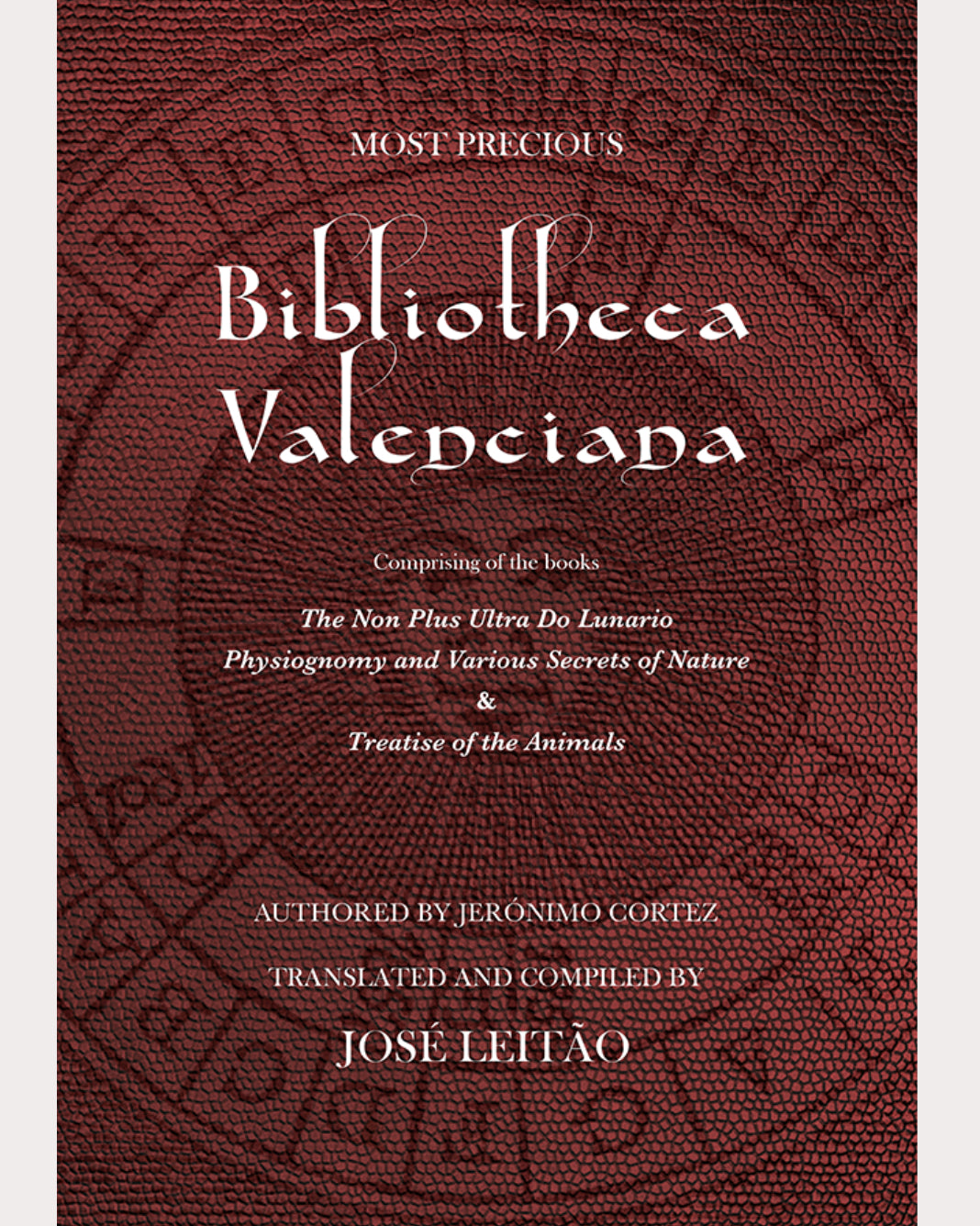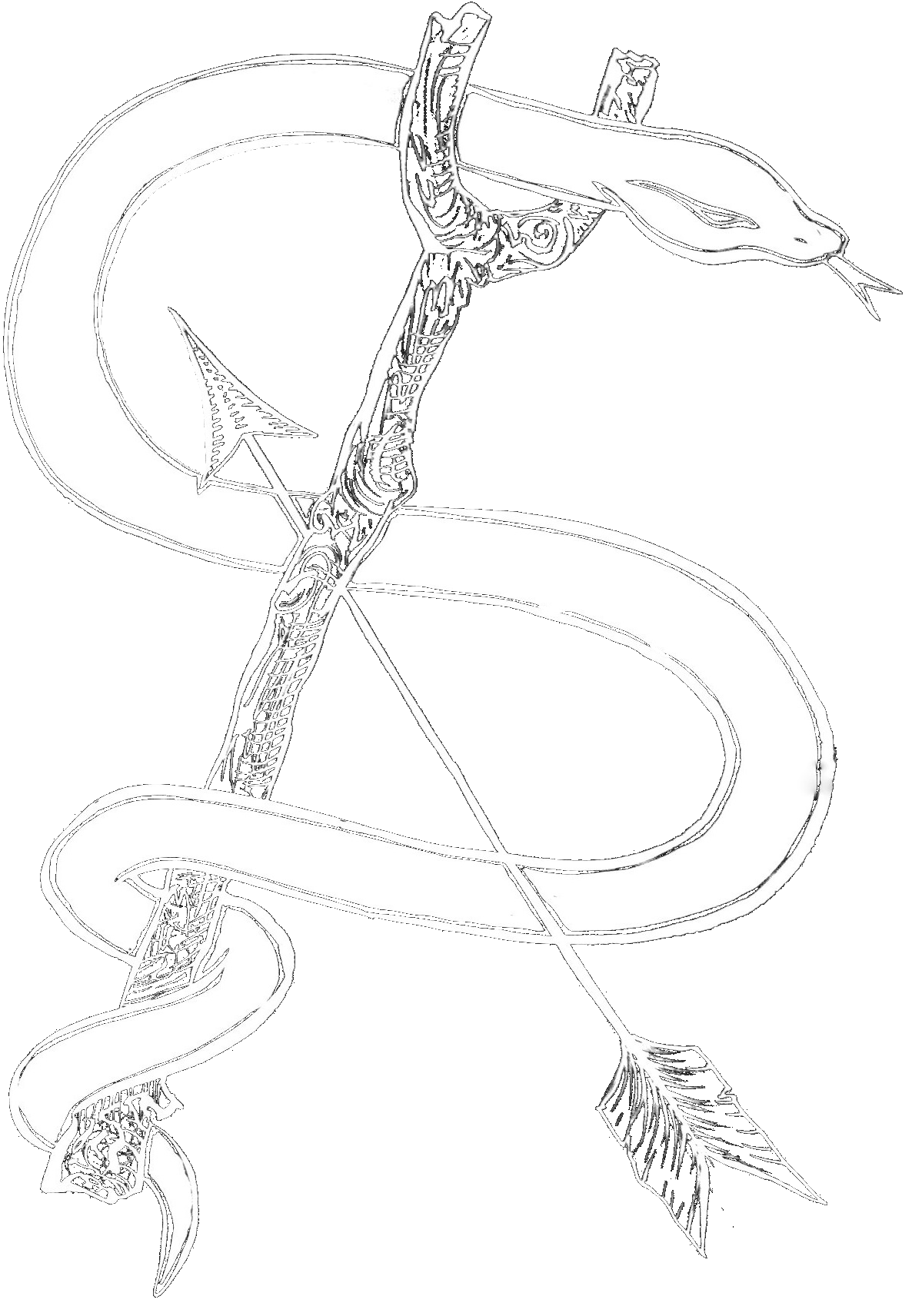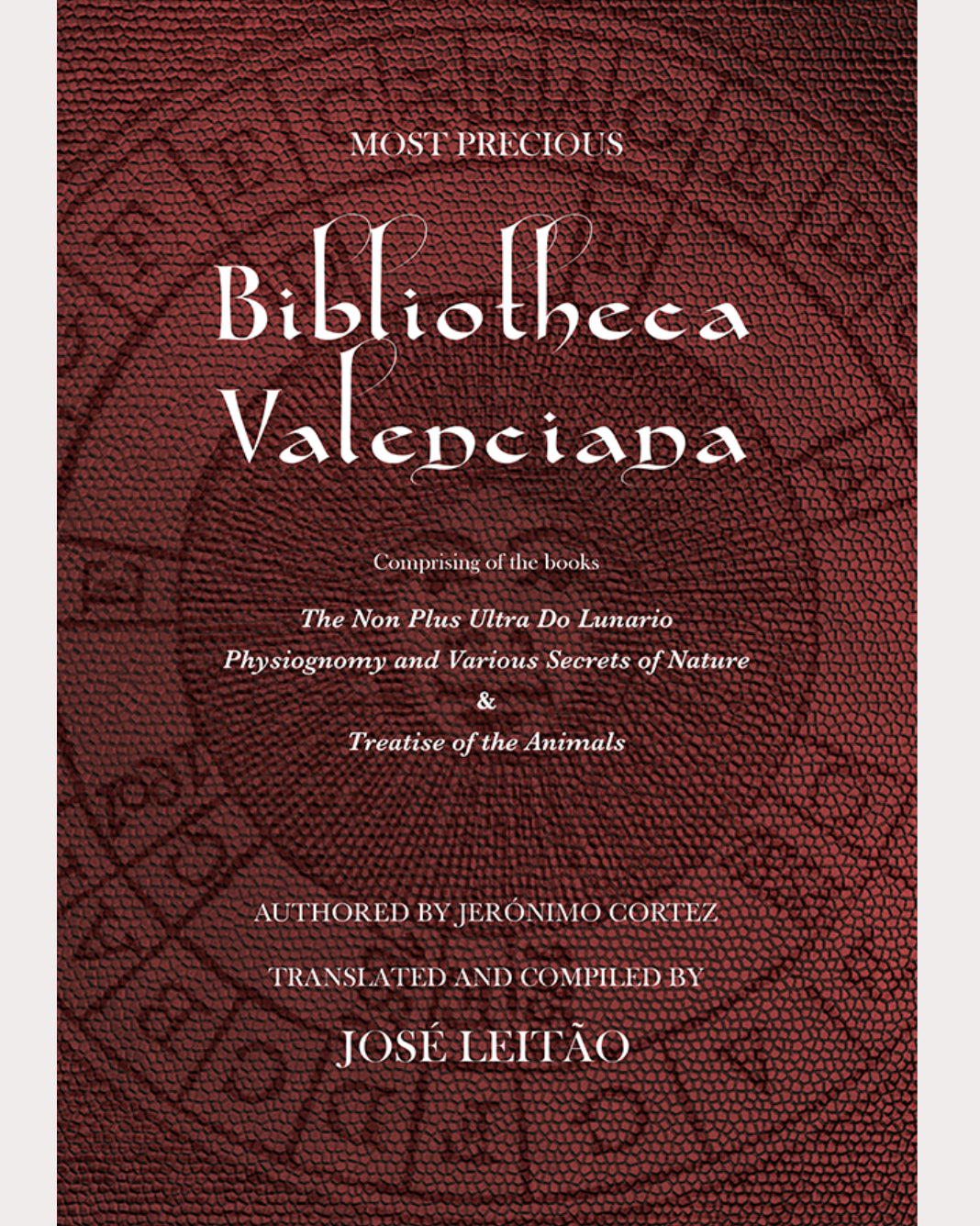Hadean
Biblioteca Valenciana
Biblioteca Valenciana
Couldn't load pickup availability
Trans. José Leitão
Hadean Press
The Bibliotheca Valenciana contains translations of three of Jerónimo Cortez’s great works: the Non Plus Ultra Do Lunario, the Physiognomy and Various Secrets of Nature, and the Treatise of the Animals, presented and compiled for the first time into one English language volume.
Coming out of the Spanish 17th century, little is known about Cortez himself, though his impact on the newly created and emergent Iberian middle classes broke with the centuries-old academic establishment previously monopolised by the wealthy, educated nobility and of course by the priests who served the masses. By offering the historically underprivileged knowledge of the stars, the land, and of their own bodies, Cortez’s books quickly placed themselves in a revolutionary cultural crossroads from where they would influence local folklore, folk magic, and the grimoires of later centuries, such as the literary continuum of the Iberian Books of St. Cyprian. Today Cortez’s works not only have value as historical documents, but also as a powerful, rich and broad bridge offering access to the way our ancestors thought about and acted upon the world in which they lived, no longer in the role of passive victims of destiny, but as active directors of their reality.
The Lunario is an early almanac, full of astrological and astronomical information, prognostications of the weather, descriptions of the various winds, information on bloodlettings, and includes remedies for a variety of conditions such as windy inflammation, gout, cataracts, and mange.
The Physiognomy is part medical treatise covering the humours, the qualities of the astrological signs, the physiognomy of each part of the body, and part astrological text, describing the properties of the elements and their regions. It also includes sections on the many uses of rosemary and aguardente.
The Treatise is a bestiary covering the land and air animals, and includes mythical beasts such as the unicorn and the dragon.
In his introduction, José provides a fascinating look at how this material passed into later grimoires, and back out again, weaving a tapestry of lore that sometimes was scientific, and other times magical, and at all times a little bit of both.


